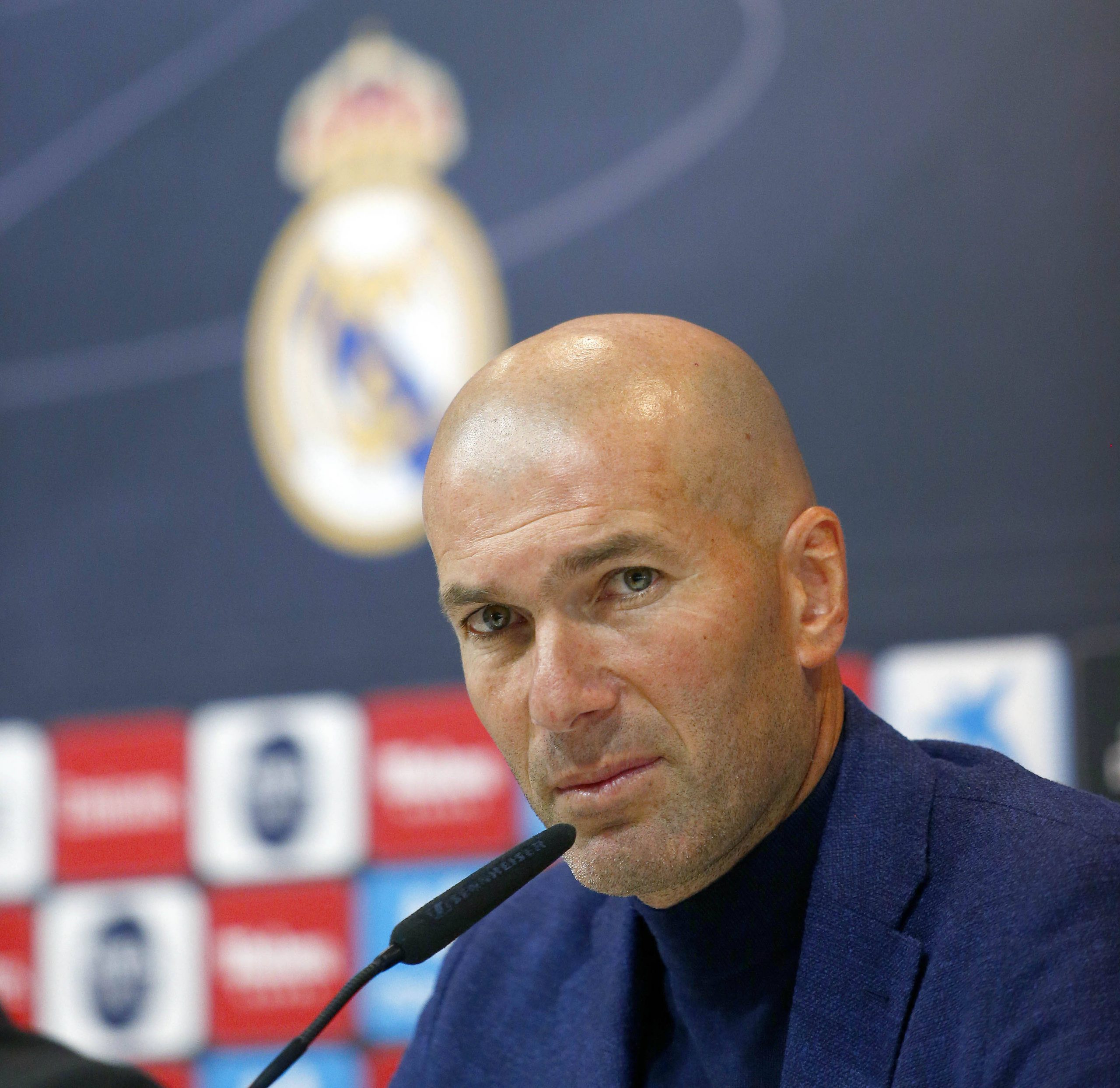Zinedine Zidane, ahead of the 2018 Champions League final. "I'm not the best coach, and I will always say that. I am not the best coach tactically... and, well, I don't need to say that because you lot always say that, anyway.” When Zidane returned to Real Madrid in March of last year, nobody knew what to expect. His first spell was a paradox, pairing historic achievements with bizarre inconsistency. The squad was incredible but also heavily reliant on individual heroics; with Cristiano Ronaldo gone and less talent at his disposal, many felt he would have to evolve. Madrid’s collective organization declined over the course of Zidane’s original tenure.
His first season was characterized by his unique strengths: convincing stars to defend and accept rotation, and starting Casemiro over more glamorous names in spite of Florentino Perez’s pressure. His final season was a tactical disaster: excessive crossing, Casemiro making runs forward, and Luka Modric defending at right back. One thing was abundantly clear then and now: Zidane’s ego doesn’t distort his evaluations, be it of players, coaches, or even himself. He is aware of his limitations, a theme going back to his own playing career. This is a man who resigned after a Champions League threepeat because he saw the writing on the wall for his burned out squad and didn’t try to defy it.
When he returned he was risking his legacy, but he seemed convinced he could again achieve success.
The Enigmatic Start To The Season
If Zidane had evolved, it was not immediately apparent. Pre-season was muddled by injuries to key players, a 7-3 loss to Atletico Madrid, and confusion over transfers. With Ronaldo long gone and the team needing goals from midfield to compensate, the squad depth seemed to lend itself to a 4-2-3-1 shape, accommodating James Rodriguez:

But every time Zidane played this midfield, Madrid’s buildup play suffered regardless of opposition. Without Luka Modric next to him, Casemiro took far too many risks near his own box. The defense wasn't working either, and much like Zidane’s first spell, Sergio Ramos and Raphael Varane were left to defend acres of space whenever they conceded a counterattack. This all culminated in the loss to Paris Saint-Germain. With Casemiro playing in the double pivot against Thomas Tuchel’s high pressing side, Madrid were played off the park. Casemiro’s usage and the total lack of connectivity standout:

PSG, however, managed to maintain excellent symmetric spacing. They sliced through the Madrid defense even without Neymar and Kylian Mbappe:

The aftermath of this game brought suggestions that Zidane could be sacked. Six full weeks into the season, after a huge summer outlay, the team was performing far below potential.
Revitalizing The Defense
With the 4-2-3-1 experiment failing, Zidane moved back to a three-man midfield. Most importantly, he organized a stifling defense based around a more frequent press. The key to this change was the introduction of Federico Valverde as a box to box midfielder. His defensive intensity rubbed off on his teammates.
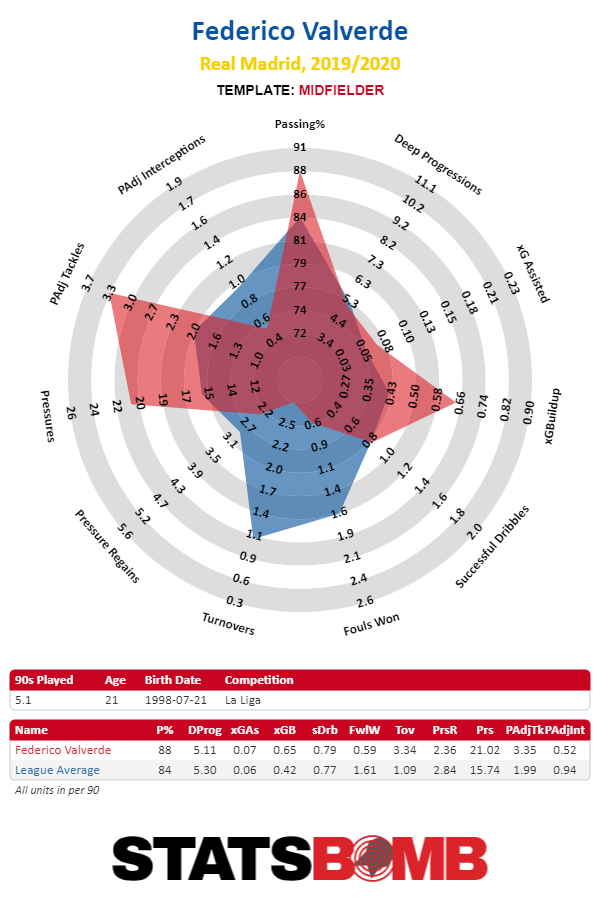
Valverde’s pace and physicality catalyzed a much more aggressive Real Madrid able to lean into their defensive identity. Opposition passing chains were more frequently contested, and opponents’ passing completion rates dropped. The shift is perhaps best illustrated by the change in the percentage of their defensive actions that we define as aggressive -- actions recorded within two seconds of the opposition receiving the ball. In the six games before Valverde’s introduction, Madrid were in the 2nd percentile of this metric. Ever since, they’ve ranked comfortably above average:

Opponents struggled to create high quality chances. This reorganized Madrid defense was among the best in Europe, and the best at the club in years. Their improvement is clearly visible in the xG trendline:

Buildup play also improved. Casemiro started taking a more passive role in buildup with Valverde available. The team was better able to reach the final third, and for a brief period when both Eden Hazard and Marcelo were healthy, they created chances at will. This is well illustrated by the reverse fixture against PSG. Madrid dictated terms with their high press, and Tuchel’s side were the ones with a disheveled passing network:

Zidane opted to play Isco in the diamond shape that won Madrid their Champions Leagues, with Hazard and Valverde replacing Ronaldo and Modric respectively. For the first hour this was one of Madrid’s most dominant performances in recent seasons.

The difference in Casemiro’s role between each game is telling. He played roughly the same number of passes in both games, even though Madrid had much more of the ball at the Bernabeu. When the team was clicking offensively, his relative usage rate was down.
Lingering issues
After a strong end to 2019, the xG trendlines correctly reflect that, for many reasons, Madrid have been relatively inconsistent. Offensively, the team has caught bad luck with injuries. Marcelo’s injuries signal the definitive end of his prime, and he isn’t even attempting one dribble per 90 anymore. His replacement, Ferland Mendy, is completing 2.5 per 90, but he is more effective with space than against a deep defense. Eden Hazard has missed most of the season due to injury.
Behind him, Vinicius Junior’s finishing and combination play leaves much to be desired. That he is up to 0.48 expected goals and assists per 90 minutes is encouraging in the long term, but his actual scoring contribution is only 0.28 goals and assists. This season, Madrid needed Hazard to reach their offensive ceiling. Marco Asensio, who was set to get an extended run at right wing, tore his ACL in the summer.
The domino effect played a role in both Rodriguez and Gareth Bale staying at the club. Rodriguez has struggled to stay fit and has barely contributed. Bale’s production is down to 0.43 expected goals and assists per 90 minutes, and he doesn’t appear to have the ability to seize games anymore. Arguably more than any other top coach, rotation is at the heart of Zidane’s coaching philosophy as well. He is uncompromising, and has reaped the rewards by winning the Champions League in every season he completed as head coach.
This season, however, that rotation has hurt the team’s cohesion. Defensively, there is no natural replacement for Casemiro. He sat on the bench as Madrid conceded four goals en route to a Copa Del Rey elimination against Real Sociedad. He is arguably the best destroyer in Europe. Over the past few seasons, he ranks in the 98th percentile for possession-adjusted tackles and 99th percentile in pressure regains among midfielders in the big five leagues.
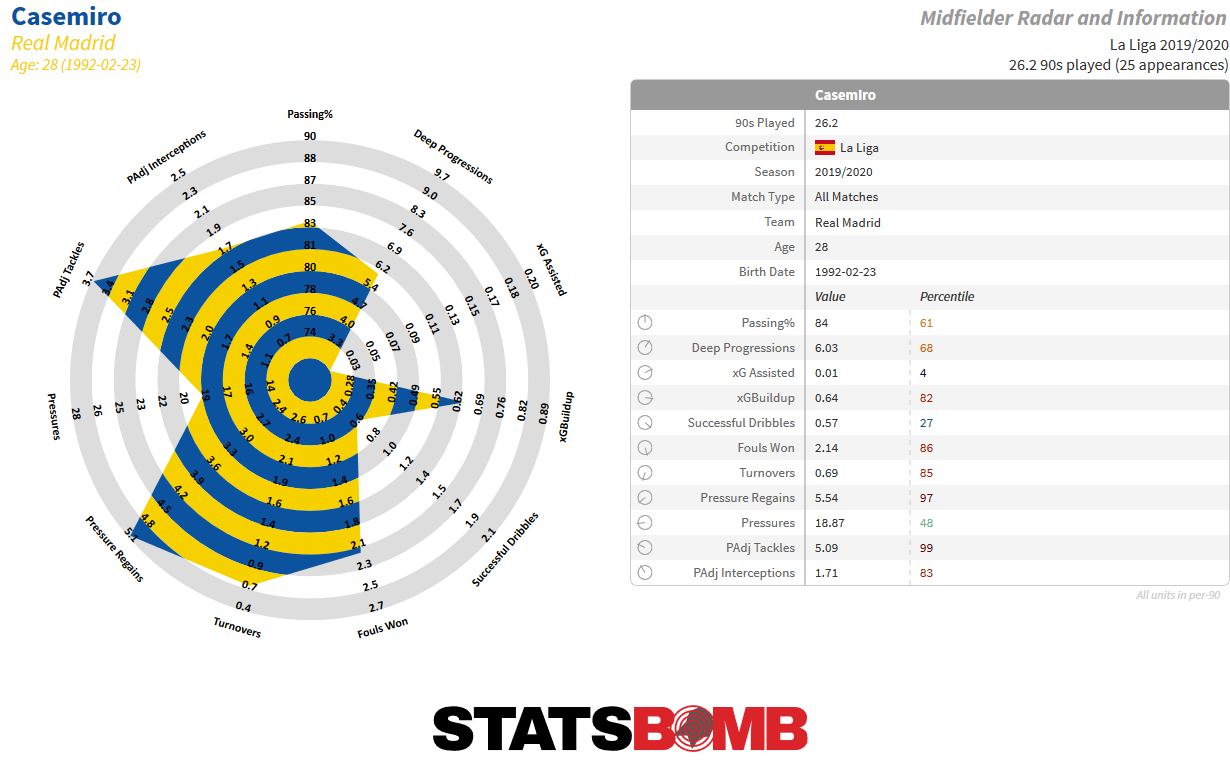
Valverde is also hard to replace. Modric was an excellent defensive presence a couple years ago, but at 34 he struggles to match Valverde’s tenacity. Starting January, Zidane began rotating the duo more heavily, and Madrid’s defensive line has moved slightly deeper as a result:

This rotation policy, combined with a limited approach in the final third, is why Zidane has struggled to integrate Luka Jovic. The Serbian was supposed to help replace Ronaldo’s production, but has only played five full games worth of minutes in La Liga. Karim Benzema has had to shoulder the scoring load, with others chipping in.
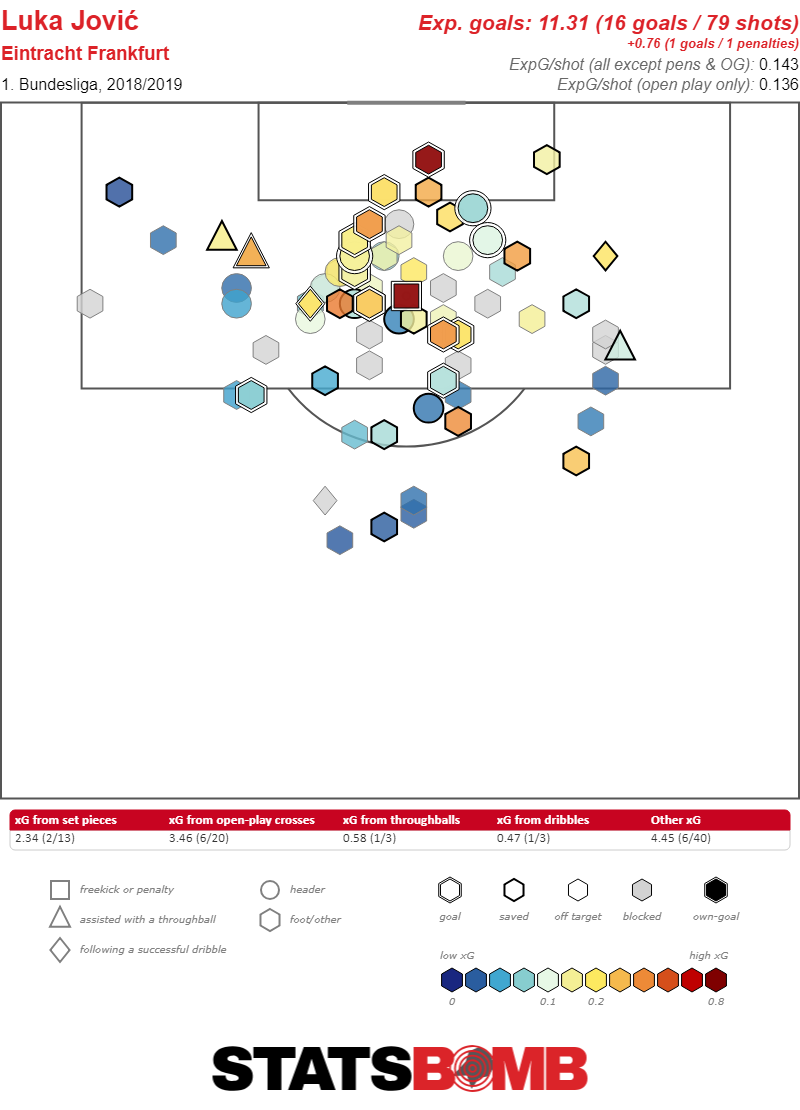
Jovic is putting up far fewer shots at Real Madrid, often looking disconnected from the unit on the pitch. This is partly fuelled by a change in role. At Frankfurt, Jovic was involved in a far more direct team, and had more space to work with. He would receive the ball in central areas and lay it off against less compact defenses. With more space, he had the license to take more risks.
At Madrid, he often faces deep lying defenses, is often isolated up front, and rarely seeks to combine at a slow pace. It doesn’t help that he’s trying to replace Benzema, who is among the best strikers in Europe at this very role. Benzema is all about making himself available to receive the ball in the half spaces to combine with full backs. The difference in pass attempts also reflects how Jovic was used to playing faster and more vertically:

Zidane isn’t blameless here. Jovic has only started four games in the league. He often comes onto the pitch at the expense of a midfielder, when Zidane switches to a 4-4-2 while chasing the game. This leaves Casemiro exposed in a double pivot, and Madrid have subsequently lost control of the ball instead of feeding Jovic. On a team level, Madrid attempt far too many aerial crosses. This is a habit carrying over from Zidane’s first spell, when Ronaldo was a target, but is less effective with Benzema leading the line alone. Perhaps more low, cut back crosses are in order. The bulk of the improvement, however, will come with new personnel and time.
Completing The Team
To succeed with Zidane, Madrid will primarily require better offensive talent and depth. The attack also needs more symmetry; most of the team’s high usage players in each line of play operate on the left (Ramos, Toni Kroos, Isco, Hazard and Vinicius). Most passing networks resemble this:

Given their needs, Madrid’s returning loanees and the players they’ve been linked with fit extremely well. For starters, Martin Ødegaard - if his loan is cut short - would be a better fit than Isco. Isco is a ball magnet. He excels at creating numerical overloads, dribbling and drawing fouls in tight spaces, but is not great at creating chances. This is why he’s been more effective for Madrid in big Champions League ties, helping Madrid control the ball and evade the high presses of Liverpool, Bayern Munich and others, than in the league, where he’s asked to break lines against deep defenses.
In contrast, Ødegaard is among the best at scanning his surroundings and breaking defensive lines. Team style shouldn’t be discounted here, but on the evidence of this season, he is a much more direct player, consistently seeking to receive the ball between the lines and completing more deep progressions. Ødegaard plays 26% of his passes forward to Isco’s 15%, and only 9% backwards to Isco’s 14%. They complete a similar number of dribbles, but the former releases the ball faster instead of drawing fouls:
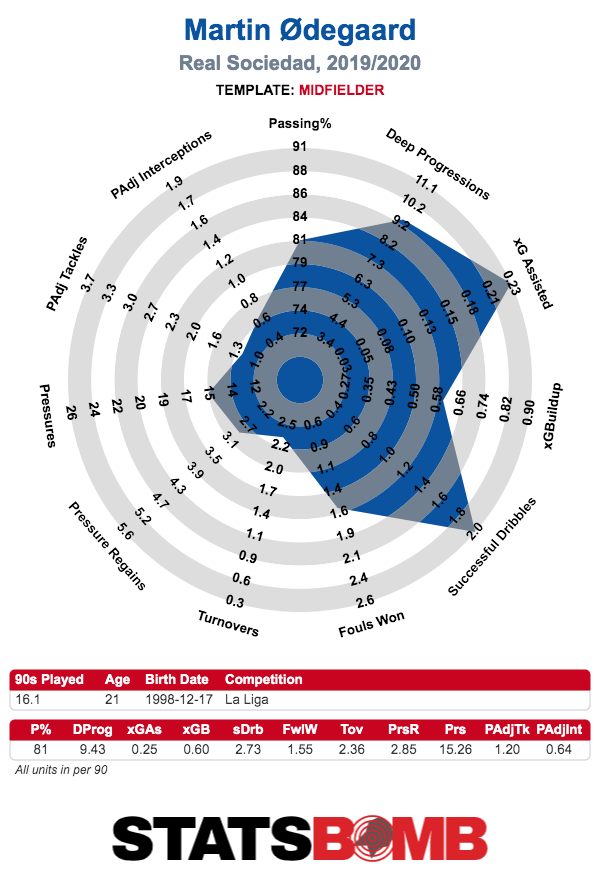
Ødegaard is a high IQ passer, and would help restore some symmetry by operating on the right of the midfield zone:

Achraf Hakimi is set to return from loan and is an excellent fit as well. Madrid need more attacking quality at full back to replace Marcelo. Carvajal sufficed in the past, but his solid aerial crossing technique has proven less useful since Ronaldo’s departure. Hakimi is by no means as diligent a defender as Carvajal. This bears out in the numbers: Carvajal is dribbled past less often, contests and wins double the aerial duels. But Hakimi is a better dribbler, carrying the ball more often and further when he does.
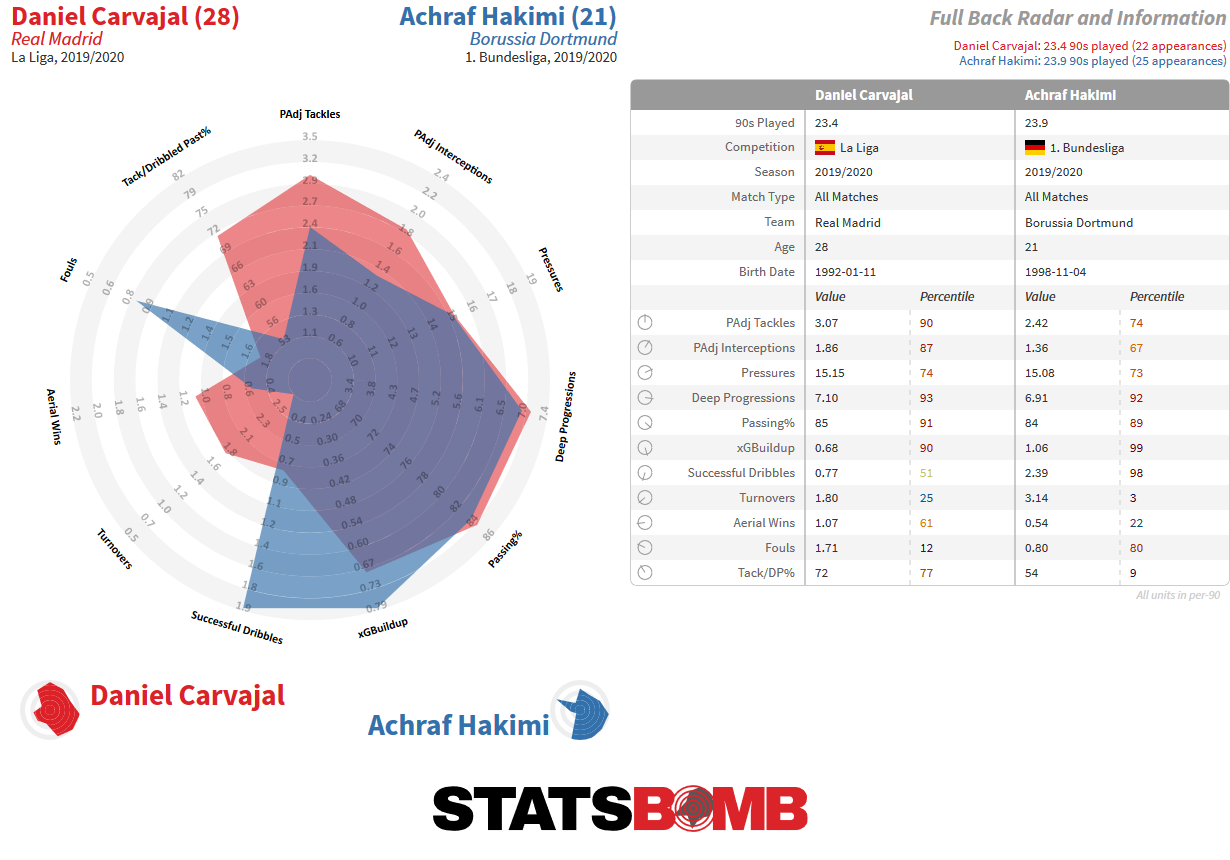
At 21, Hakimi is still growing. He has turned the ball over more often this season than any Real Madrid player barring Eden Hazard. He may not displace Carvajal immediately, but he does address Madrid’s offensive weakness on the right wing. On the right wing, the suspension of football gives Marco Asensio a fantastic chance to return from injury as the same player as well.
Most complications after recovering from ACL tears take place when a player is rushed back. Another name linked to Madrid is Donny van de Beek. Profiling as an offensive alternative to Valverde, he is a high volume tackler, and also excels with his late runs into the area. He shoots and gets more touches in the box than any Madrid midfielder, contributing to a goal every other game -- albeit in the Eredivisie.
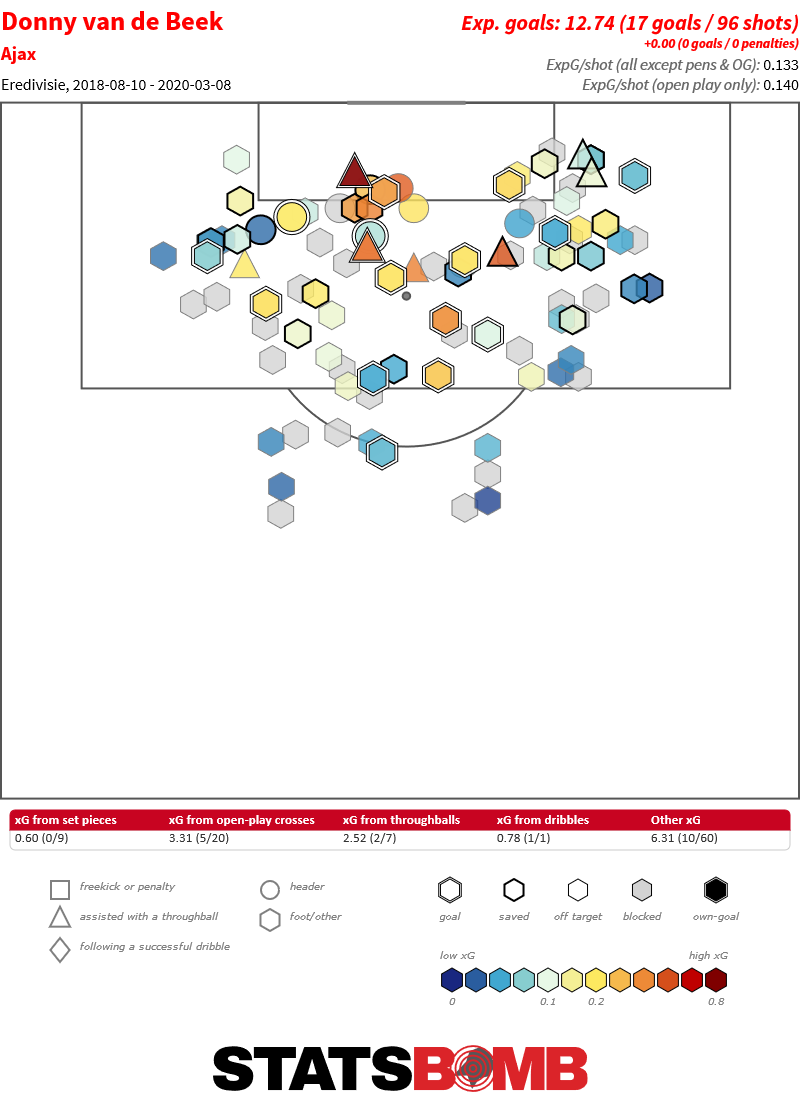
The team also needs a backup for Casemiro. Rennes’ Eduardo Camavinga profiles especially well. At just 17, he has been among the best defensive midfielders in Ligue 1. Zidane’s French connection could push the deal through:
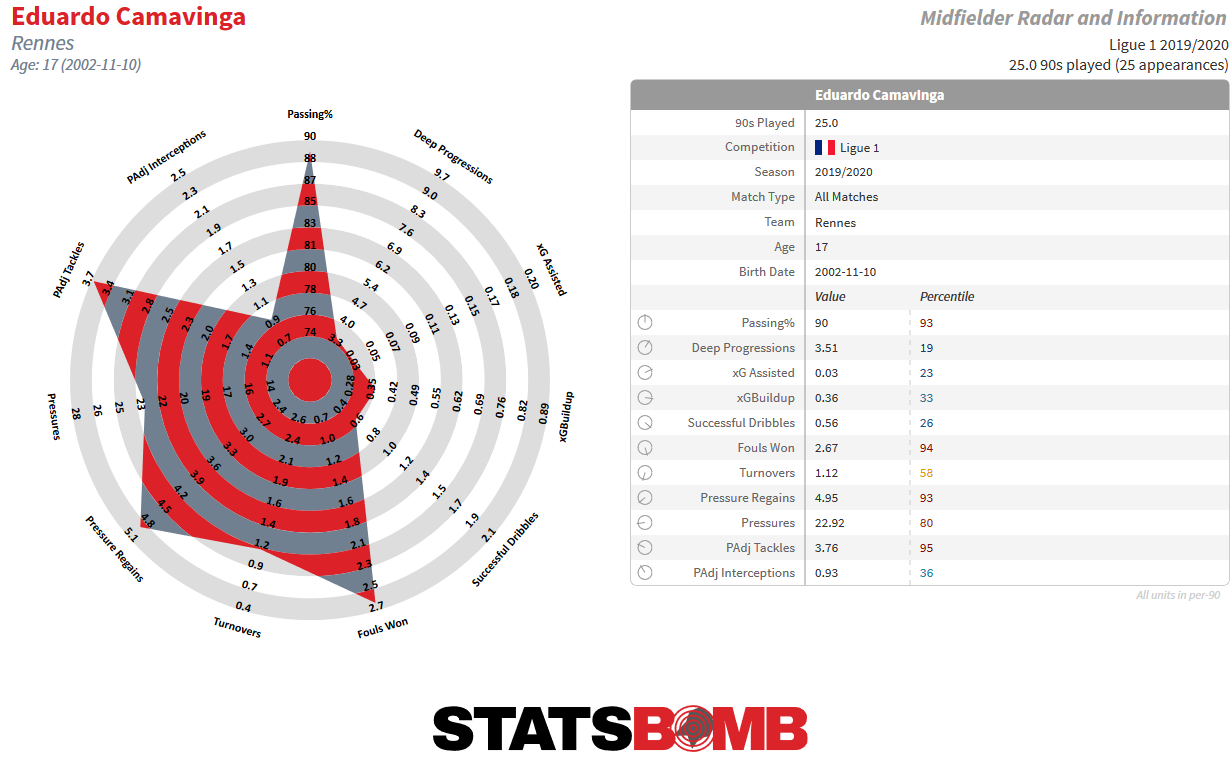
Lastly, Madrid have publicly courted Kylian Mbappe. The French superstar is now the most devastating goalscorer in the top 5 leagues. His production is historic:
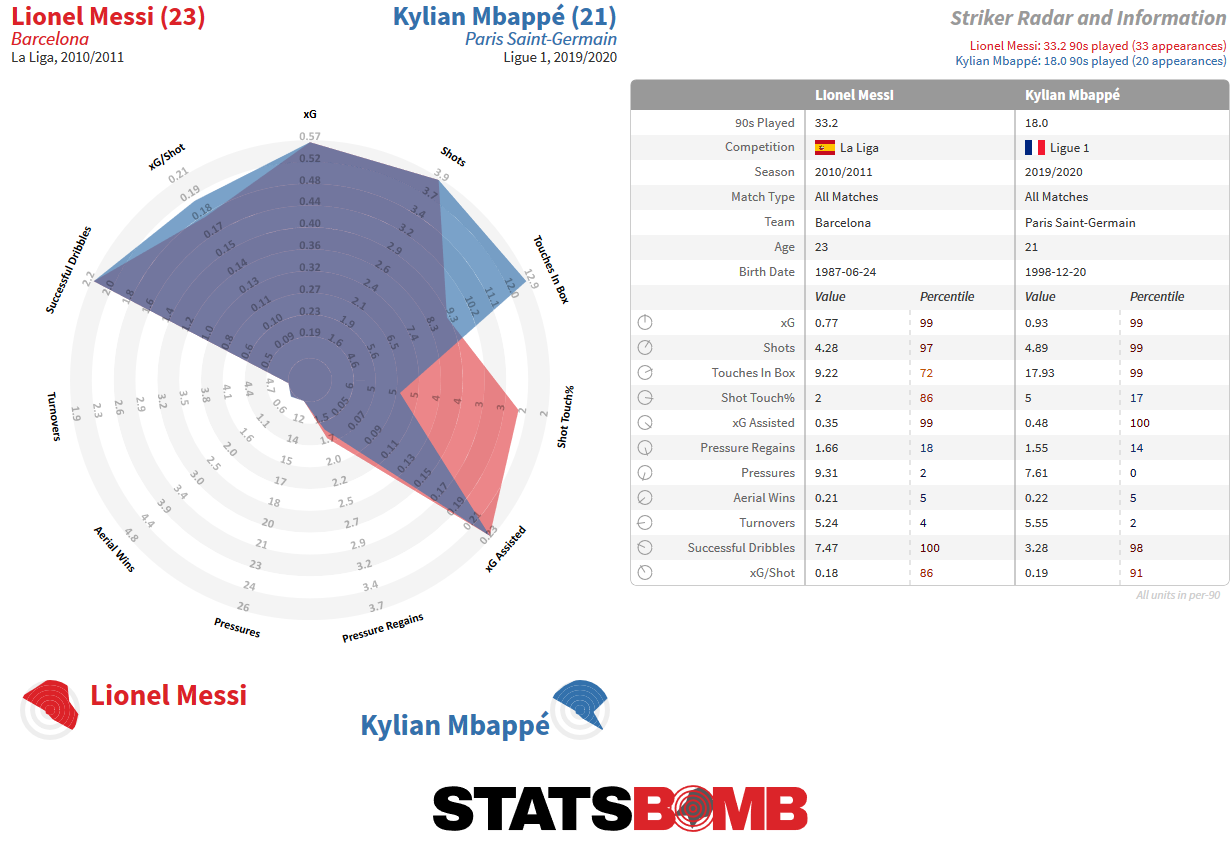
Mbappe alone should shoot Real Madrid’s offense back to the levels of the Ronaldo era. That is likely Zinedine Zidane’s endgame.
